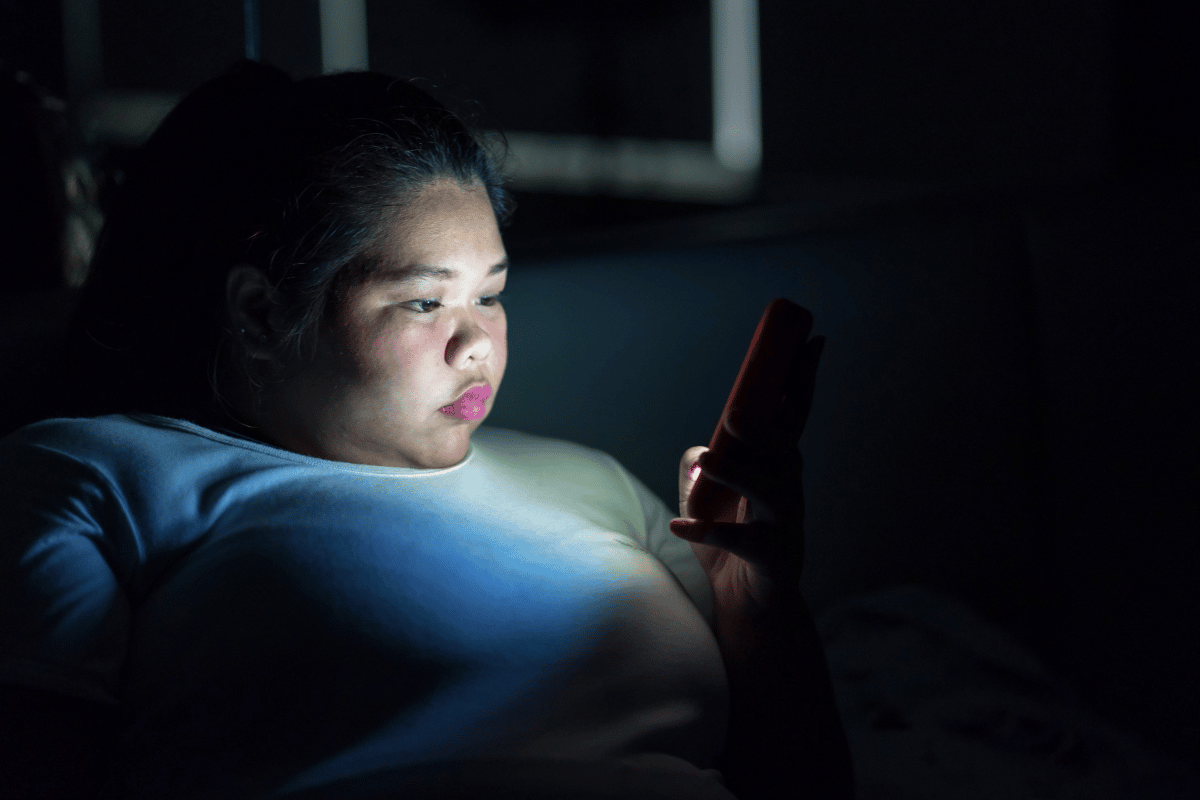Cyberbullying and the LGBTQ+ Youth Community
LGBTQ+ youths often find welcoming and safe spaces online. However, due to negative attitudes toward the LGBTQ+ community, these teens may be at more risk for cyberbullying than their non-LGBTQ+ peers. The Social Media Victims Law Center seeks to provide you with the necessary resources and legal support to understand the impact of LGBTQ+ cyberbullying on your children.
 Written and edited by our team of expert legal content writers and reviewed and approved by Attorney Matthew Bergman
Written and edited by our team of expert legal content writers and reviewed and approved by Attorney Matthew Bergman
- Content last updated on:
- June 12, 2025
Written and edited by our team of expert legal content writers and reviewed and approved by

- Content last updated on:
- June 12, 2025
What You’ll Learn
- Who makes up the adolescent LGBTQ+ community?
- What types of bullying do LGBTQ+ youth experience on social media?
- How does cyberbullying impact the mental health of LGBTQ+ youth?
- How does cyberbullying LGBTQ+ youth correlate with suicide?
- What are the warning signs of cyberbullying?
- How can you prevent LGBTQ+ youth cyberbullying?
- Contact the Social Media Victims Law Center Today
Although social media has many positive effects, such as creating connections among peers, it often helps foster negative outlooks toward the LGBTQ+ community, putting LGBTQ+ youths at risk for cyberbullying.
As a parent, you want to do what you can to protect your children from the harm cyberbullying poses. The Social Media Victims Law Center understands the sensitive yet severe nature of LGBTQ+ cyberbullying. We can help you learn more about LGBTQ+ youth cyberbullying, including warning signs to watch and ways to prevent it.
If your child has been harmed by LGBTQ+ cyberbullying, contact the Social Media Law Center for a confidential and free evaluation of your legal options.
Who makes up the adolescent LGBTQ+ community?
The LGBTQ+ community includes individuals identifying as lesbian, gay, bisexual, transgender, queer or questioning, and all other sexual orientations or gender identities. As of September 2020, almost two million young people between the ages of 13 and 17 identify as LGBTQ+.

What types of bullying do LGBTQ+ youth experience on social media?
Too often, LGBTQ+ youth are targets of online bullying based on their sexual orientations or gender identities. Common types of cyberbullying LGBTQ+ youths may experience on social media include but aren’t limited to:
- Outing: When a person reveals a child’s gender identity or sexual orientation without consent
- Trolling: An abuser makes derogatory and antagonizing comments, sometimes across multiple social media platforms, about a child to provoke a response or hurt the child’s feelings
- Flaming: Another person sharing or posting insults and profanity about a child to start an online fight
- Fraping: When some posts inappropriate content to a child’s social media accounts without the child’s permission, falsely indicating that a child is the author behind the content
- Doxxing: Others are maliciously publicizing a child’s private information that would not typically be shared online, such as home or school address, phone numbers, or Social Security number
- Catfishing: When another online user creates a fake online identity to engage with a child and build a romantic online relationship, which allows the impersonator to gather sensitive information the impersonator may use to embarrass the child later
How does cyberbullying impact the mental health of LGBTQ+ youth?
The Centers for Disease Control released a 2021 Youth Risk Behavior Survey finding that 27 percent of LGBTQ+ high school students have experienced cyberbullying. For LGBTQ+ teens, the effects of cyberbullying, including the impacts of social media on mental health, can be severe.
A literature review published by the Journal of Child & Adolescent Trauma explored more than 25 studies reporting the psychological health effects cyberbullying has had on LGBTQ+ adolescents. Common mental health effects included the following:
- Depression
- Poor self-esteem
- Behavioral issues, such as physical aggression
- Poor body image
- Decreased academic success
- Isolation

How does cyberbullying LGBTQ+ youth correlate with suicide?
Cyberbullying is a risk factor for youth suicide. The Trevor Project, a nonprofit organization focused on LGBTQ+ youth suicide prevention, notes that the higher risk of suicide for LGBTQ+ youth is not directly a result of their gender identity or sexual orientation. Instead, the higher risk results from the mistreatment and stigmatization LGBTQ+ youth experience in society.
LGBTQ+ youth attempt suicide more than their non-LGBTQ+ peers. A 2022 study of almost 34,000 LGBTQ+ youths aged 13 to 24 found 45 percent of the LGBTQ+ respondents seriously contemplated suicide, and 14 percent had attempted suicide. Those numbers increased for respondents between the ages of 13 and 17, with 50 percent considering suicide and 18 percent attempting suicide.
Moreover, a 2021 study revealed that 52 percent of LGBTQ+ youth reported being bullied in person, online, or via text. In addition, the teens who reported being bullied were more likely to attempt suicide than those who denied bullying experiences.
What are the warning signs of cyberbullying?
Your LGBTQ+ teen may not come to you about any instances of cyberbullying they have experienced. They could fear that you’ll entirely take away their online access, which can mean losing their positive emotional supports. You need to know how to recognize the warning signs to determine if your child is experiencing cyberbullying.
Some signs to watch for include the following:
- Sadness or anger after your child was online or used a phone
- Isolation from friends and family
- Changes in academic performance or interest in school
- Changes in the desire to attend school or specific classes
- Unexplained illnesses or symptoms that keep your child home
Other signs your LGBTQ+ child is a victim of bullying include:
- Changes in eating habits
- Running away from home
- Engaging in self-harm
- Mentioning suicidal thoughts
Behavior changes, mood changes, and shifts in who your child identifies — or no longer identifies — as a friend are also warning signs of bullying in LGBTQ+ youth. You may also want to look for signs of social media addiction, such as more time spent online than in real-life events.

How can you prevent LGBTQ+ youth cyberbullying?
It’s not an easy task to prevent every instance of cyberbullying, but there are many steps you can take to help minimize your child’s cyberbullying experiences.
Support Your Child’s LGBTQ+ Identity
Your teen’s decision to share their LGBTQ+ identity with you may be very difficult. Support your teen in whatever way they need and reaffirm your love for them. Loving your child is one of the best support systems you can provide. LGBTQ+ teens living in LGBTQ-affirming or gender-affirming homes reported fewer suicide attempts than those living in non-LGBTQ+-affirming spaces.
When your child is ready to begin dating and exploring relationships, normalize their relationships regardless of the orientation or identity of the person they choose to date. Additionally, help your child understand what healthy and age-appropriate relationships are.
You can also reinforce your child’s identity by partnering with their school. Encourage the school to support your child and create an inclusive community with training and open dialogue.
Monitor What Your Child Is Doing Online
Know what applications your child uses online, who they are talking to, and who their online friends are. You can implement parental controls and ground rules for your child’s internet use. However, remember many LGBTQ+ youth find information and support online, so try to avoid restricting all access to the Internet.
Reporting Cyberbullying
Reporting Cyberbullies is sometimes necessary, especially if the conduct is persistent and threatening. Occasionally, simply blocking the cyberbully will prove effective at ending direct contact. However, If the cyberbully finds ways to continue direct communication, you might need to recruit help from online service providers, school administrators, or law enforcement to put an end to the harassment.
Are there more resources for LGBTQ+ parents?
The Social Media Victims Law Center provides many helpful tools and resources for parents of LGBTQ+ youth who have experienced cyberbullying, including:
- How to Identify Social Media Addiction and Problematic Use: A Parent Guide — Social media addiction is a growing problem. Parents can use this guide to learn about social media addiction and how to keep their children’s social media use reasonable.
How to Identify Suicide Risk: A Prevention Guide for Parents — Because of the prevalence of suicide amongst LGBTQ+ individuals, parents may use this resource to understand suicide risks and learn what they should do if they suspect their child is suicidal.
Contact the Social Media Victims Law Center Today
If you are the parent of an LGBTQ+ teen that has suffered harmful mental health effects from cyberbullying, contact the Social Media Victims Law Center today. We’ll be on your side every step of the way. Contact us today for a free and confidential consultation to evaluate your case and find out how we can help with your legal options.
Frequently Asked Questions
For individuals and children who have been
We only handle cases on a contingent fee basis. This means that we are paid a portion of any recovery obtained in the case and you do not owe us any attorneys’ fees if the lawsuit does not result in a recovery.
Every case is unique. Our attorneys will work with your family to evaluate your potential case and help you evaluate whether filing a lawsuit or other legal proceeding is in your family’s best interest. Generally speaking, the types of cases we handle involve serious mental health effects, including attempted or completed suicide, eating disorders, inpatient mental health treatment, or sexual trafficking/exploitation that was caused by or contributed to through addictive or problematic social media use by teens and young adults.
We are a law firm based near Seattle, WA comprised of lawyers who have spent their entire careers representing victims who have been harmed by dangerous products. We are also parents. Shocked and troubled by the recent revelations about the harm caused to teens and young adults by social media platforms, which powerful technology companies have designed to be highly addictive, Social Media Victims Law Center was launched specifically to help families and children who have suffered serious mental harm or exploitation through social media use to obtain justice.
Contact Us Today
Related Pages
Client Testimonials
Explore Popular Topics

Addiction

Suicide

Eating Disorders

Anxiety

Bullying

Sexual Abuse

Body Image


